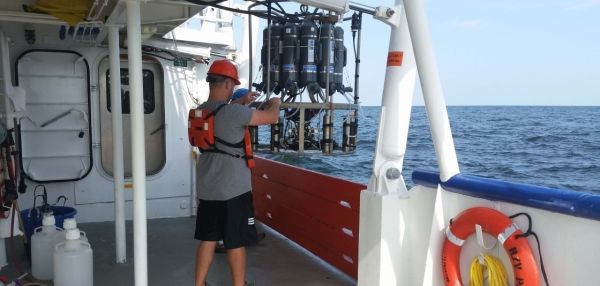NOAA scientists are forecasting that this summer’s Gulf of Mexico hypoxic zone or ‘dead zone’ – an area of low to no oxygen that can kill fish and other marine life – will be approximately 5,780 square miles, approximately the size of Connecticut.
The 2018 forecast is similar to the 33-year average Gulf dead zone of 5,460 square miles and is smaller than the 8,776 square mile 2017 Gulf dead zone, which was the largest dead zone measured since mapping began in 1985.
Even though NOAA is predicting an average dead zone this summer, the dead zone remains three times larger than the long-term target set by the Interagency Mississippi River and Gulf of Mexico Hypoxia Task Force, a group charged with reducing the Gulf dead zone.
The Gulf’s hypoxic zone is caused by excess nutrient pollution, primarily from human activities in the watershed, such as urbanization and agriculture. The excess nutrients stimulate an overgrowth of algae, which then sinks and decomposes in the water. The resulting low oxygen levels near the bottom are insufficient to support most marine life.
Read more at National Oceanic and Atmospheric Administration (NOAA)
Image Credit: NOAA


